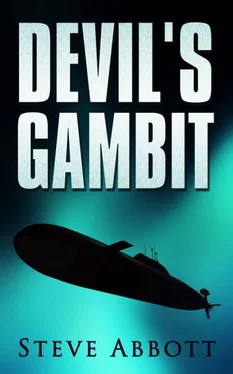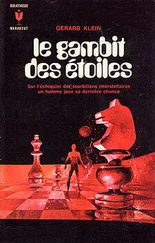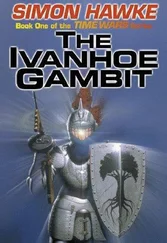Gayle bit her lip. “Damn.”
Harris spoke up. “They dispatched HMS Bloodhound to intercept and board the freighter. They were operating a little ways up the coast, but the weather is pretty bad down there right now. It’s making the search pretty difficult.”
Gayle looked around the room. “Well gentlemen, what do you think we should do?”
Sean shook his head. “It doesn’t matter what we think. It’s your call.”
“Everybody out to the jet. Looks like we’re going to Cape Town. We’ll take it from there once they tow the freighter back in.”
The Captain and bridge crew of the aging ship, DPRK Nung Il Yeung, struggled to hold their position in increasingly heavy seas. The latitude and time of year made this mission very dangerous. His crew, while politically reliable, were not a seasoned group accustomed to these ocean conditions. His navigator, face growing greener by the minute, attested to that fact.
The Captain wondered just how long his ship’s diesels would hold out. The push out from Cape Town had been a hard one. They had driven out due south from the Cape at twelve knots, full speed for the Nung. They had then looped back on an Easterly course up into the Indian Ocean. The distance to the rendezvous point, just South of Madagascar with the evasive maneuvers, had been done in just over two days. The rough weather had actually helped. Search flights from Antananarivo or the South African mainland, if there were any, would have been grounded. The Captain smiled. He was also sure that no ship or shore-based installation had seen them on radar. The Nung Il Yeung’s passive radar detectors had remained silent the whole trip. Without radar, anybody would have a hard time finding them indeed. The only other ship with knowledge of their destination was the submarine they were to rendezvous with. Hopefully, they had as good a navigator as his.

On board the submarine, DPRK Great Leader, Captain Pak Kil-yon was more concerned with the water conditions above than the abilities of his crew. The Great Leader was the most secret of secrets and the pride of his country’s small submarine fleet. A revolution in modern diesel submarine design, it was sixty five meters long, with a beam of eight and a half meters. The Great Leader’s cigar-shaped hull and squat sail looked very much like the Alfa class attack submarine it was modeled after. Twin diesel power plants incorporated a rebreathing Lithium Hydroxide Oxygen system. North Korean intelligence had liberated it and the plans for the Leader from a Russian submarine research facility at Sevastopol.
The new system allowed the battery power plants to recharge while the sub was still submerged. Snorkeling and exposure to surface search radars were no longer a worry. The improved lithium polymer battery system allowed the Leader to run virtually silent for longer periods. If needed, they were capable of generating a speed of 22 knots dived. The Russian Beluga class working prototype was just now entering sea trials. The North Korean engineers had done a spectacular job at producing a functioning war-capable submarine in far less time.
As a diesel, the Great Leader was quieter than its nuclear cousins. The diesel electric sub was also a great deal cheaper than the nuclear alternative. It’s only true problem was range and dependency on refueling as opposed to a five-plus year life of nuclear fuels. The Great Leader’s range at ten knots maintained was roughly fifteen thousand miles or thirty days submerged. More than enough fuel for their present mission. The Leader was designed as a hunter/killer, a defender of North Korean shipping lanes.
It was because of this distinction as a hunter, the sub’s Captain chafed at the role of being a mere delivery truck. But their orders had been specific and he was too much a patriot to question them. He and his crew had sailed at flank speed from Wonsan to their present position. The plan was to rendezvous with a North Korean freighter and transfer top secret cargo on board. The Leader was then to race, again at flank speed, back to North Korea. Success would gain admiration from his peers and recognition by the government. Should he fail, his body and that of his entire officer group, would become fish food in the Sea of Japan, an unspoken but expected outcome. Fear was a great motivating factor with any man.
To make sure that he and his socialist brothers did not falter at the gate, not the usual one, but two political officers had been sent along. Pyongyang need not have bothered. The Captain and his officer group were committed to the aims of Kim Jong Un and the interior council.
The layout of his new sub was much different than of earlier copied versions of Soviet, Whiskey and Romeo classes. Although somewhat cramped, the interior was intelligently laid out. The sonar operator’s position was in front of the raised platform that made up the bridge. This allowed instant communication between the Captain, the sonar operator and the helm controls to the side of the sonar station. Because of the narrow beam and lack of height in the sail, the Leader’s periscopes were woefully short. The Leader had to be almost surfaced to use them. They had been waiting on station now for the last two days. Boredom could be just as deadly an enemy as the sea sometimes.
The sonar officer raised his hand for complete silence, as he fought to isolate the sounds of a ship’s screws out of the wave clutter on the surface. “Twin screws.” His hands made tentative adjustments to his console controls as he tried to align the hydrophones on the sound source. After another thirty seconds, he was satisfied. “Range fifteen thousand meters, bearing two nine one, making just enough turns to keep him stationary.”
The Captain knew they had to get closer. The ship had to be confirmed as the one they wanted. On a mission such as this, caution was advised. “Present speed, helm?”
“Making turns for six knots, sir.”
“Make turns for twelve knots. Bring us within two thousand meters and then up to periscope depth. Hold at that position.”
“Aye, sir.”
There was a brief surge of motion as engineering brought the boat up to the speed called by the helm. The Captain turned to the political officer standing just behind him watching his every move. “We will be moving into swells soon. It would be best if you stood by the railing and kept out of the way.” The officer glared at the Captain but moved to the railing. Regardless of the power political officers held on land, at sea the Captain was still the ultimate leader.
Captain Kil-Yon remembered seeing this one shoveling food down at breakfast. Well, he was going to pay for that very soon. “I hope you had a light breakfast, Comrade. My sonar officer tells me things are quite rough above.”
As if in answer, the boat started to roll slightly from side to side as they moved into the bottom of the large surface swells. The political officer, who had worn a sardonic grin while the Captain admonished him, started to take on a green tinge as his inner ear and eyes refused to agree on what was seen and what was felt.
The Captain and his crew had been through it all before and knew how to lessen the effects.
“Periscope depth achieved, Captain,” the helm announced.
“Target bearing three six zero, firing solution calculated, tubes one and two loaded. No radar sets in evidence,” sonar followed.
The Captain smiled. A firing solution had not been asked for. It showed his crew appreciated and respected him. In return, he would not let them down. “Excellent. Scope up full.” He doubted in this sea that a fully extended periscope would be seen. The view through the periscope augmented the disorientation felt by his body and eyes, but the ship dead ahead in the scope view was a freighter. With the thumb wheel on the left hand grip, he increased the magnification until he could read the name and registry. He stepped back and slapped the grips up, “Down scope. Excellent work, comrades. Prepare to surface, and helm, keep us pointed into the waves.”
Читать дальше













